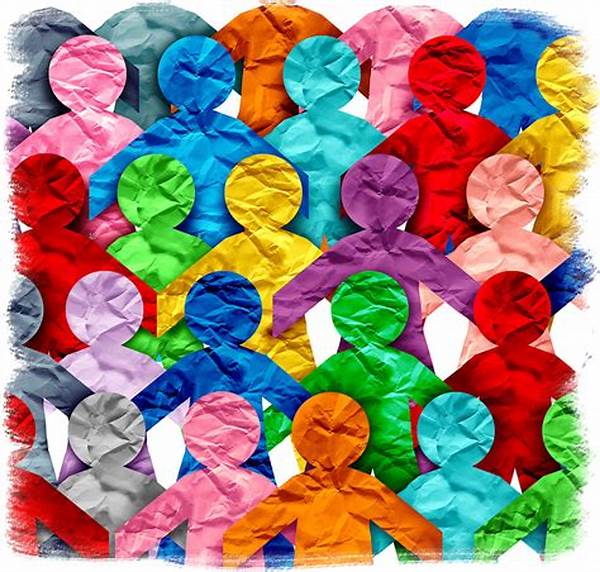Hey there, data enthusiasts! Today, we’re diving into a topic that’s super important in the world of data and research — inclusivity in data collection. You know, ensuring that everyone’s voice gets heard and that every piece of data counts. Whether you’re a data analyst, a researcher, or just someone who loves numbers, understanding how inclusivity can change the game in data collection is huge. So, let’s break it down, have a little chat, and see how inclusivity can make our data game stronger.
Why Inclusivity Matters
Imagine you’re throwing a big party, but only sending invites to a few friends. Sure, it might be fun, but you’d miss out on the experiences and stories of so many others. That’s kind of the scenario when we ignore inclusivity in data collection. When we strive for diversity and inclusivity, we’re not just being fair — we’re making sure that the data truly reflects the society we live in. It means considering different perspectives, ethnicities, ages, and all those delicious layers that make us unique. Inclusivity in data collection isn’t just a checkbox; it’s a necessity to get the full picture, to understand trends, and to make informed decisions. And let’s be honest, data that only reflects a narrow group is like trying to complete a puzzle with missing pieces. By ensuring inclusivity, we’re giving everyone a voice and a space in the data narrative, helping to craft stories that truly resonate with the tapestry of our real world.
Steps Towards Inclusive Data Practices
1. Widen Your Scope: Inclusivity in data collection starts with broadening who we collect data from. More voices, better insights.
2. Question Your Biases: We all have them, but being mindful can help in collecting more inclusive and accurate data.
3. Accessible Tools: Ensure the tools or surveys you use are accessible to everyone. Inclusivity in data collection means breaking down barriers.
4. Training: Train your team in the importance of inclusivity, so everyone’s on board with diverse data collection.
5. Feedback Loop: Always have a channel open for feedback. It’s vital for maintaining inclusivity in data collection practices.
Challenges in Achieving Inclusivity
Sure, inclusivity in data collection sounds amazing, but let’s keep it real — it’s not without its challenges. For starters, reaching out to every demographic isn’t always easy. There’s the issue of language barriers, cultural differences, and even accessibility hurdles that can pop up when you’re trying to make your data collection process more inclusive. Plus, not everyone is comfortable sharing their information, which can make capturing diverse data a bit tricky. However, the good news is that these challenges aren’t insurmountable. They just require a bit of creative thinking, empathy, and perseverance. Inclusivity in data collection means continuously asking ourselves how we can do better and striving to reach groups that have been historically underrepresented or overlooked. It’s a journey, not a destination, but it’s one worth embarking on.
Building a Culture of Inclusivity in Organizations
Organizations need to cultivate a culture where inclusivity in data collection is a priority. One way to do this is by incorporating diversity training for employees. Such initiatives can enlighten team members on the importance of inclusive practices and the impact of diverse data on decision-making. Similarly, audits and reviews of current data collection processes can reveal gaps in inclusivity that need addressing. Encouraging collaboration between teams can also foster a holistic approach to data collection that considers the inclusion of multiple perspectives. Inclusivity in data collection doesn’t just reside in data departments; it should be a thread woven throughout the entire organizational fabric, leading to more comprehensive and representative data outputs.
The Impact of Inclusivity on Data Insights
When we emphasize inclusivity in data collection, the insights we derive become richer and more nuanced. Hey, let’s face it, insights pulled from a pool of diverse data often lead to innovations, as they help marketers, product developers, and policymakers better understand the needs and desires of varied audiences. Such comprehensive insights can contribute to product designs that cater to a wider audience, policies that address the needs of diverse populations, and marketing strategies that resonate with more people. Essentially, inclusivity in data collection facilitates a more profound comprehension of society’s complexities, enabling solutions and initiatives that meet a broader range of needs and serve a more extensive community.
Tools and Techniques for Inclusive Data Collection
Now, let’s chat about some of the tools and techniques that can make inclusivity in data collection a breeze. For starters, surveys should be crafted in a way that is relatable and easy to understand for different groups. Consider translating your materials into various languages and making sure they cater to diverse literacy levels. Digital tools, such as accessible survey platforms, can enhance inclusivity by providing various means for individuals to share their data. Also, leveraging social media and other digital channels can help engage a wider audience and bring in diverse voices. Remember, there’s no one-size-fits-all approach, so being adaptable and creative is key. With these strategies, inclusivity in data collection becomes an attainable goal.
Wrapping It Up
So, what’s the endgame of promoting inclusivity in data collection? It’s not just about filling in the gaps — it’s about creating a data environment that celebrates and understands the full spectrum of human experience. Inclusivity ensures that no voice goes unheard, and that the stories and insights we derive from data are as multifaceted and rich as the people they represent. This is an exciting time to be in the world of data, as we increasingly recognize the importance of inclusivity and strive to make it the norm rather than the exception. As we head into the future, let’s continue this journey towards more inclusive data practices, because our world, in all its diversity, deserves nothing less.

